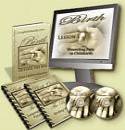Treatment
for
Gestational Diabetes
Does it Improve Birth Outcomes?
Despite the increasingly common diagnosis and treatment of Gestational Diabetes, birth outcomes have not improved as a result of these efforts. No more mothers or babies are saved with current treatment of GD than without. Death rates, birth injury rates, and congenital anomaly rates have all remained consistent.
The definition of GD itself is controversial because blood sugar levels rise linearly as pregnancy progresses, meaning that blood sugars will and should be higher during pregnancy. The Oral Glucose Tolerance Test (OGTT) has also been abandoned as an indicator of true Type I diabetes because its results are too variable. This is also true of the Glucose Challenge Test (GCT).
Because of the manner in which the standards that treatment for gestational diabetes were based are racially biased and did not exclude the Type I diabetic mothers, hundreds of women are mistakenly diagnosed with GD. In addition, the cut-off scores of treatment for gestational diabetes were arbitrarily determined by the flawed control group and do not represent the levels under which complications occur.
Today, nearly all women diagnosed with GD, even those whose GD is well-controlled, will have their babies by induction or planned c-section due to widespread fears over delivering a macrosomic baby (over 9 pounds) despite the lack of evidence that this improves outcomes.
Glucose level in itself is a poor predictor of macrosomia. Other factors such as race, age, number of previous pregnancies, sex, and especially maternal weight, far outweigh glucose intolerance in determining birth weight. Birth weight and glucose are only correlated in babies over the 90th percentile for weight, which typically represents mothers with true diabetes who weren't diagnosed until pregnancy. In reality, they are Type II diabetics.
Late term ultrasound is also notoriously inaccurate as a measure of fetal weight. A one-time late term ultrasound has a standard error of measure of +/- 2 pounds, which means a fetal weight estimate of 8lbs could result in a baby being born anywhere between 6-10lbs.
Weight alone is also not a reliable predictor of true cephalopelvic disproportion or which babies will experience birth injuries, suffer shoulder dystocia or require operative vaginal birth. Too many variables factor into the equation, from head circumference and fetal position to maternal labor positions, interventions used, and pelvic dimensions. The only way proven to determine if a baby is "too big to fit" is a trial of labor.
Options After Gestational Diabetes Diagnosis
Decide if screening is the right choice for your circumstances. If you are in a low-risk group, don't develop risk factors and are symptom-free during your pregnancy, then
consider
declining it. In the vast majority of cases, diet and exercise are the recommended treatments, so paying special attention to these factors can lower your risks of developing any complications.
Instead of submitting to the GCT, the typical screening tool, consider a Hemoglobin A1C: it's a simple blood test that gives a three-month measure of blood sugar levels. It provides more diagnostic information of the stability of blood sugar levels over time than the GCT or OGTT. If the levels have been abnormally high over the past three months of pregnancy, then the accuracy of a Gestational Diabetes diagnosis increases.
If diagnosed with GD, work with a
nutritionist or dietician to regulate blood sugar levels. If within normal limits, then no increased risks of complications are present. A Biophysical Profile (BPP) and/or non-stress tests at the end of pregnancy may be recommended,
but if the results are within normal limits, then induction or
c-section are not warranted in most cases.
Mothers with gestational diabetes should still be allowed to labor and birth freely in their position of choice. Maintaing adequate nutrition during labor is also essential to maintain appropriate blood sugar levels in the mother and baby.
Once the baby is born, nursing immediately will stabilize the baby's sugar. If a blood test is suggested, it should be performed after the baby has eaten. By depriving the baby of nutrition immediately after the birth will cause hypoglycemia and may result in overtreatment of the baby that could be avoided. Also, mild asymptomatic hypoglycemia isn't typically cause for undue concern. Monitoring the baby and its feeding patterns may be recommended for the first few hours after birth.
Top of Treatment for Gestational Diabetes
References
Tuffnell DJ, West J, Walkinshaw SA.
Treatments for gestational
diabetes and impaired glucose tolerance in pregnancy. Cochrane Database
of Systematic Reviews 2003, Issue 3. Art. No.: CD003395. DOI:
10.1002/14651858.CD003395
Lamar ME, Kuehl TJ,
Cooney AT, Gayle LJ, Holleman S, Allen SR.
Am J Obstet
Gynecol. 1999 Nov;181(5 Pt 1):1154-7.
Atilano LC, Lee-Parritz A, Lieberman E, Cohen AP, Barbieri RL. Alternative methods of diagnosing gestational diabetes mellitus. Am J Obstet Gynecol. 1999 Nov;181(5 Pt 1):1158-61.
Goer,
H. OBSTETRIC MYTHS VERSUS RESEARCH REALITIES: A GUIDE TO THE MEDICAL
LITERATURE. Westport: Bergin and Garvey, 1995.
"Gestational
diabetes," INTERNATIONAL JOURNAL OF CHILDBIRTH EDUCATION.
1991;6(4):1991.
Stephenson MJ. Screening for gestational diabetes mellitus: a critical review. J FAM PRACT 1993;37(3):27-283.
http://www.aafp.org/afp/20031101/1767.html
http://www.aafp.org/afp/20040301/putting.html
Brody SC, Harris RP, Lohr KN. Screening for gestational diabetes: a summary of the evidence for the U.S. Preventive Services Task Force. Obstet Gynecol 2003; 101:380-92.
Catalano PM, et al. Reproducibility of the oral glucose tolerance test in pregnant women. AM J OBSTET GYNECOL 1993;169(4):874-881.
Keller JD. et al. Shoulder dystocia and birth trauma in gestational diabetes: a five-year experience. AM J OBSTET GYNECOL 1991;165(4 Pt 1)928-930.
Return from Treatment for Gestational Diabetes to Pregnancy Questions
Return to Giving Birth Naturally Home
Page Last Modified by Catherine Beier, MS, CBE
Most Popular
How to Use Acupressure to Induce Labor
Childbirth Relaxation Script MP3s
Nutrition During Pregnancy - Nix the Notion of Eating for Two
Looking for a Birth Professional? Search our Provider Directory
Online Childbirth Classes
Choose 7 week, 12 week, or Self- Paced online childbirth classes available wherever and whenever you need them.
Featured Birth Story
Vanessa's natural birth story shows that when birth is left alone to proceed as it should, it waits for no one - not even doctors or midwives.
Free Pregnancy Tickers
Create a free pregnancy ticker to post on your blog, website, Facebook profile or favorite social media...




